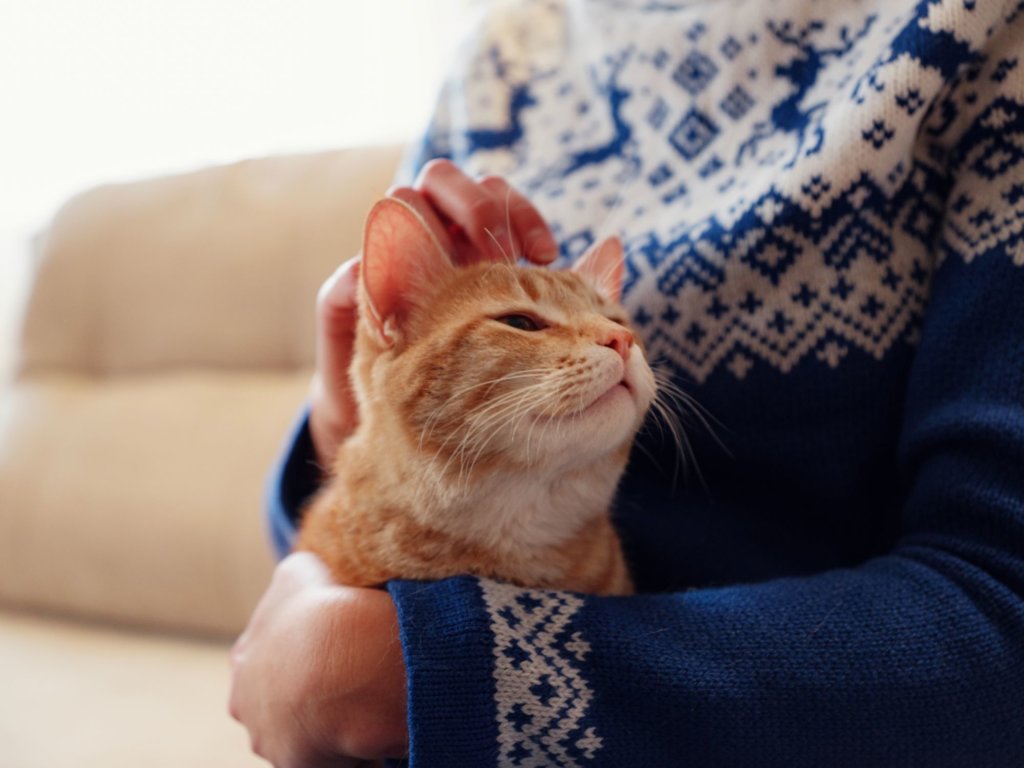As winter settles in and temperatures start to drop, our pets need extra care to stay comfortable and safe. These tips can help you keep your pets warm, happy, and healthy throughout the colder months.
1. Limit Outdoor Time
Some dog breeds love the cold weather and have double coats to keep them warm, but other pets are more sensitive to low temperatures. Keep an eye on how long they’re outside, especially for small, short-haired, or older pets. If you’re cold, they’re probably cold too. Puppies, kittens, and senior pets are particularly vulnerable, so their exposure should be limited to prevent hypothermia or joint pain that can be worsened by the cold.

2. Watch Out for Cold-Weather Hazards
Winter can pose unique hazards for pets. Antifreeze, salt on sidewalks, and even holiday decorations can be risky. Check and wipe your pet’s paws after walks or outings to make sure there’s no residue from ice melt or salt. Clipping the fur between your pet’s toes can also reduce ice buildup.
Antifreeze is highly toxic and even small amounts can be deadly. Clean up any spills immediately and store containers securely. De-icing products can also irritate paw pads and are toxic if swallowed, so consider using pet-safe de-icers on your property. Finally, be sure to watch your pet around space heaters or open fireplaces to avoid burns.
Bring your outdoor pets inside when temperatures reach freezing or below. Even dog breeds like Huskies and Malamutes should not be left in freezing temperatures for an extended period of time. If you cannot bring them inside of your house, set up a shelter that is dry, filled with warm bedding and fresh water, and protected from wind.
3. Provide Warm Clothing and Paw Protection
Some pets, especially small or short-haired ones, can benefit from a warm coat or sweater during chilly weather. Make sure the clothing is dry before each use, because dampness can make your pet feel colder.
For dogs, consider having them wear boots or paw balm to protect their feet from ice, snow, and rough surfaces. Not only does this prevent discomfort, but it also guards against frostbite and injuries from de-icing products or sharp objects hidden in the snow. (They’ll also be the most fashionable dog on the block)!
4. Adjust Their Diet and Hydration
Cold weather can affect your pet’s energy needs, so adjust their diet as needed. Ask your veterinarian about your pet’s nutritional needs during cold weather, especially for primarily-outdoor pets that may require more calories to generate body heat. If you and your pet tend to slow down during the winter, they may need less calories to stay at a healthy weight. In addition, always keep fresh water available, as pets can become dehydrated even in winter.
5. Create a Cozy Indoor Environment
For pets that spend most of their time indoors, make sure they have a warm and comfortable space to rest. Use blankets, pet beds, or heated mats designed for animals. Keep their sleeping area away from drafts or cold floors. Regular play sessions indoors can also keep them active and mentally stimulated during days when outdoor time is limited.
6. Schedule Winter Checkups
A visit to the vet can help identify any health issues that might be exacerbated by the cold. Conditions like arthritis can worsen in colder weather, so your vet may recommend supplements or treatments to manage discomfort. Staying up-to-date on vaccinations and pest prevention is also important, as some pests and illnesses remain active year-round.
With these simple precautions, you can make winter safer and more enjoyable for your furry family members. From bundling them up for a walk or creating a warm retreat indoors, your attention to their needs can keep your pets happy, healthy, and ready to enjoy the season by your side.
This article is for informational purposes only and does not constitute professional pet care advice. For more information, contact your veterinarian.
